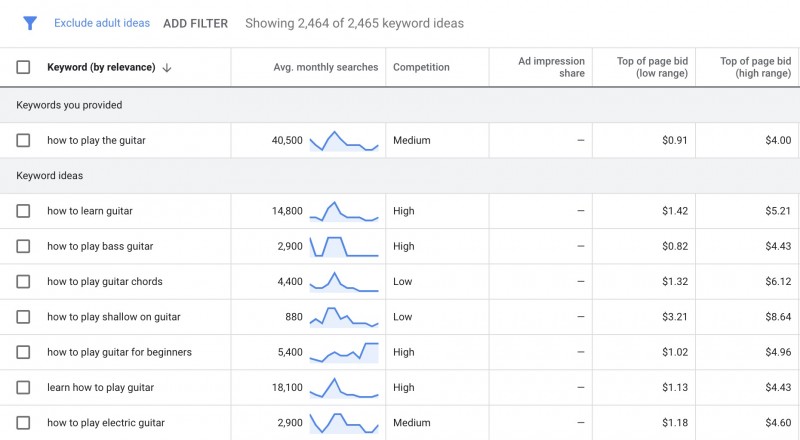As you probably know, good search engine optimization begins with having a central theme for which to optimize your website. If you have no specific theme, you have no way of determining which keywords to optimize for and so of course the search engines won’t be able to determine the value and relevance of your content. However, good targeting keyword research can give you a stronger sense of focus and increase your value with the search engines. This article will provide you with some specific steps which can help you conduct good keyword research begin building your search engine optimization strategy…
The Process of Keyword Research
Keyword research consists of five essential steps that will assure that you have keywords that can help you build a strong SEO strategy:
1. Find a Strong Niche
The first step to conducting good keyword research for your website is determining exactly what your website is going to be about and making sure that it’s a theme upon which you can build a strong online business. For example, a website about fried pickles might seem kind of interesting to you, but you still have to make sure that it is adding something of value to the lives of other people. The saying “Find a need and fill it.” is probably one of the wisest principles which you can follow in starting any kind of business or organization.
So before you begin your keyword research, it is essential to have a strong niche that represents the fulfillment of some kind of human need. This need can be for entertainment and excitement, information and education, comfort and security, social connections, or any other kind of need that is common enough to generate interest.
2. Determining Popularity
The second step for good keyword research is determining just how popular your niche already is. This will ensure that you have a good strong market of visitors to which you can market your site to. Most of the time, if you’ve found a theme that is designed to meet some kind of human need, you know that you have a popular topic. However, it’s also a good idea to look at the hard data which can be found using the Google Keyword Tool. Using the Google keyword tool, you can input phrases and keywords which are related to your niche and determine their level of popularity. For example, the screenshot below represents the results of the keyword “How to play the guitar.”

As you can see, the Google keyword tool has brought up a list of keywords that are related to the subject of how to play the guitar.
If your website is going to be promoting to people only in your local area, it is a good idea to choose only the keywords which have at least a few thousand local monthly searches. On the other hand, if your customers are going to be national or global, it’s a good idea to look for a number of 20,000 a month or more in the global search volume column.
3. Analyzing the Competition
Using the above example, you can determine how much competition exists for the specific keywords which you choose. For example, in the screenshot above, the term “how to play the guitar” has the most competition while “how to play shallow on guitar” has the least. While it might seem like a good idea to those who have the least competition, it’s actually a better idea to target those who have a medium to the high amount of competition. This is because if other businesses are competing for the keywords, it means that there is also a high demand for the content.
A lot of competition does not always mean that it will be difficult for you to create a site that stands out. It’s important to remember that not all of your competitors are going to work as hard and as focused as you are. All you have to do is be more focused, strategic, and persistent than those who are competing with you, which is where the next step of keyword research comes in.
4. Focusing Your Content
Once you have determined about five strong keyword groups (those with healthy competition and good search volume) which you are going to be optimizing your site for, it’s time to start developing specifically focused content for only those five keyword groups. You can begin by typing those keyword groups into the search engine and seeing which sites come up in the first three or four positions. These are the sites that are achieving the best position for those keywords because they are the most well optimized according to the search engines. Begin searching these sites and looking at the kind of information they are providing. Look for how they are using the keywords you want to optimize for and begin building a strategy for creating similar content.
This can be done by writing your own articles and blogs or hiring a content provider for your content creation for you. Spend several weeks or even several months creating and posting new content according to your first five keyword groups. Once this is done, you can begin creating content for other keywords or keyword groups related to your site. This will help you to get focused and get recognized by the search engines as soon as possible.
Conclusion
While this will take some time and perseverance, you can achieve solid resolves in record time if you build your keyword research on these four principles. Then you can begin expanding and creating additional web content and articles based on other keywords that are related to your initial five keyword groups. In time, you will build a strong web presence and a thriving business.
The next step in keyword selection involves analyzing the competition for your keywords.
Resources
Tools for analyzing keyword density of your competitors:
http://www.seoquake.com/
http://seopen.com/firefox-extension/index.php
http://www.websiteoptimization.com/services/analyze/
Sites for Hiring Content Providers
http://www.guru.com/
http://www.elance.com/
http://www.freelancer.com/
